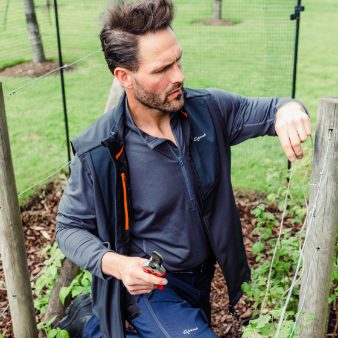Abundance

If I could describe this month in three words, they would be abundance, promise, and beauty. Every day offers something new to see and admire in the garden. You can almost blink and a plant has flowered or grown several inches...with a garden our size it can almost become overwhelming, yet it is also incredibly exciting!
Hands up who does no mow may? A few years ago, we decided the best area to leave was in the orchard... all we do is mow some paths so we can get to the hen coop, the water tap, and their feeder... to this day Tom despairs when he sees all the dandelions go to seed, as well as the hens deciding they’d rather lay their eggs amongst the knee-high grass and nettles! The bonuses have far outweighed the negatives, with the vast increase of insects, which has led to noticeably less aphids on my roses and dahlias during the summer.
Even though the weather is feeling warmer in the day, we still need to be cautious of very low temperatures and frost during the evenings, especially in early May. I’m very mindful of being caught out and try to curb that strong desire to plant any tender plants and seedlings out too soon. Here’s a few more things we’ll be doing here this month.
1- Deadhead and feed spring flowering bulbs. I highly recommend this, as it helps to increase flowers for the following year, especially if you’ve had a poor show of flower production this year. Sprinkling some general fertiliser, like fish blood and bone around the base of the green leaves while they die back will feed and help bulk up the bulbs for the following year. Try to hold off cutting away the green leaves until at least 6-8 weeks after flowering so all the energy feeds the bulb too. If you have any bulbs in pots, try using a liquid tomato feed instead.
2- Slug patrol alert! Do you live in an area with a rather large population of slugs, that love to decimate the new growth on your precious Hostas, dahlias, lupins and Delphiniums? There’s still time and hope, if you haven’t started already then now is a good time to get your armour ready! I’m a great believer in trying to strike a healthy balance, by trying not to wipe out the whole slug and snail population. When there’s a good, active ecosystem in your garden, their natural predators, like frogs, birds and (if you have the space) ducks, should do some of the work for you.
Probably one of the most successful applications and one I would use sparingly is Nematodes. Now the ground is warming up, you can start using it, this is a biological control, it’s safe to animals and wildlife, and leaves no residues in food crops. The other two alternatives are, a)- Beer traps, slugs love them! Sink several empty yoghurt pots or margarine tubs into the ground then pour the beer up to the rim, the slugs head straight to them for a drink, fall in and drown, having a happy death. The only downside to this is you need to keep checking and disposing the corpses! b)- Small piles or rings of wheat bran or corn bran, again once this is consumed by slugs, they cause desiccation and death, leaving an extra healthy meal for a bird or hedgehog! You will need to keep replenishing, especially if it rains. Good luck!
3- Pinch out dahlias... Depending on when you potted up your dahlias, somewhere during the month of May they will have grown several inches, and can start to look a little bit leggy. Once you have at least four to six pairs of leaves, you can pinch out the top shoot, which will encourage new side shoots, that will go on to produce twice as many flowers or more! I promise if you don’t do this, you will have far less flowers for picking, so be brave and start pinching out when the time comes.
4- Clip box... Traditionally and historically, all topiary box would be clipped on Derby day, the reason for this was because the Lords and Ladies would head off to Derby day (usually in late May) and the gardeners would take advantage of this window of time to clip all the box. Nowadays we tend to wait until all frost has passed (usually near the end of May!) using nice clean sharp shears. Clip away the growth until you are happy with the desired shape and look.
5- Chelsea chop! This is another historical activity for gardeners! It’s usually performed during the week of the Chelsea Flower Show. The reason for doing this, is to encourage stronger stems and a longer flowering period on perennials that tend to flower later in the season. I will use this method on plants like, Sedums, Asters and Nepeta... by cutting the stems back by half. This seems harsh, but it helps to prevent them from becoming floppy and collapsing. You have to be very very brave to do this, and it’s taken me years to get my head around it, the benefits are huge with a prolonged flowering period lifting your garden later in the season.
Don’t forget to spend lots of time enjoying the beauty of this floriferous month!







